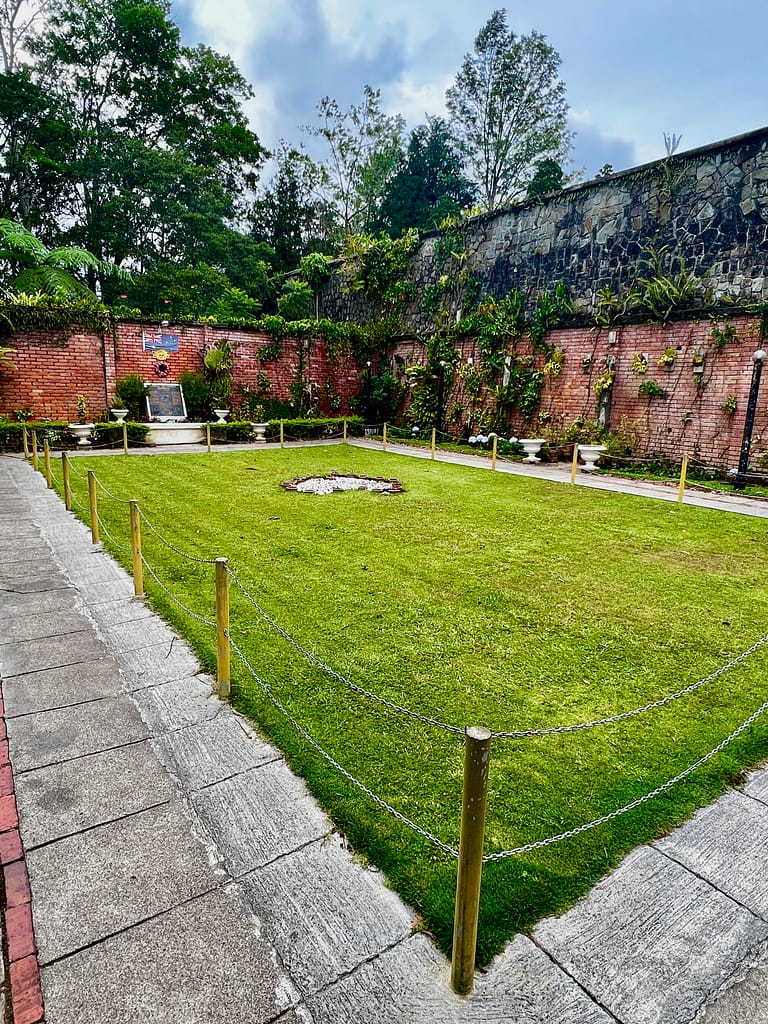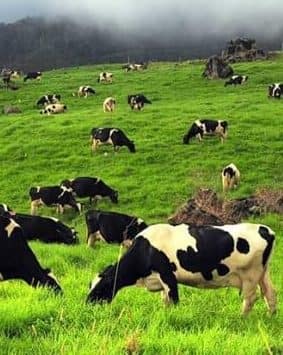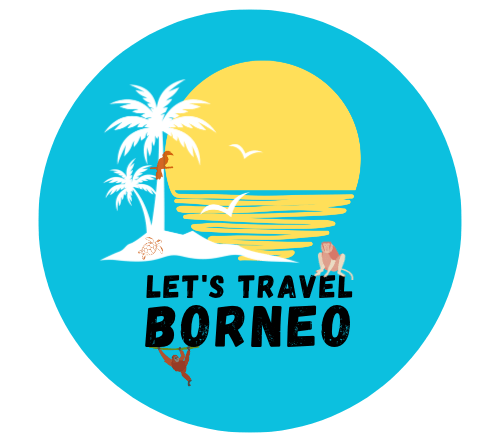As one of the main highlights of Sabah, visiting the iconic Mount Kinabalu and surrounding Kinabalu Park is a unique experience due to its positioning in the tropical rainforest. Continue below to learn about climbing the mountain and other things to do in the surrounding highlands. This article is based on my personal experience going here in 2022 with some of the information based on articles about the area.
Mount Kinabalu in short
Rising majestically in the vicinity of the city of Kota Kinabalu, Mount (Gunung) Kinabalu is the highest peak in Southeast Asia to climb and the 20th most prominent mountain in the world. With a height of 4,095 meters, the mountain is one of the most iconic natural landmarks in the region attracting many visitors every year (750.000 to be exact in 2019). Interestingly, Mount Kinabalu is one of the world’s youngest non-volcanic mountains, made of granite about 15 million years ago.
Although the mountain is popular for climbing, even for non-climbers it is well worth visiting the surrounding Kinabalu Park to see the beautiful fauna and the unique environment within tropical Sabah. The highland around is most notable for its agricultural activities. The closest towns in the vicinity are Kundasang, Mesilau, and a little further, Ranau. The capital city of Kota Kinabalu is 2 hours drive west of the mountain. Read more on Kota Kinabalu here.
Kinabalu Park
Kinabalu Park encompasses Mount Kinabalu and its surrounding rainforest. Due to its unique setting in the tropical rainforest of Sabah, the mountain and its surroundings are considered one of the most important biological sites in the world. To protect the environment, the park was established as one of the first national parks in Malaysia in 1964 and designated as Malaysia’s first World Heritage Site by UNESCO as of December 2000. The park boasts more than 5,000 species of flora and fauna, 326 different birds and over 100 mammal species. In fact, the park contributes about 2.5 percent of flora species in the world with research showing the variety of plants exceeds more than all of Europe and North America (excluding Mexico) combined.
Tickets to enter the park are RM50 for international adults.
read more
Beyond the climbing experience, Kinabalu Park also offers accommodations, nature trails, hot springs, and educational centers to learn about the area and its nature. Within the park, there are numerous trails that cater to different fitness levels and time constraints. These trails allow visitors to explore the lower regions of the mountain, providing opportunities to witness unique flora and fauna, including pitcher plants, orchids, and various bird species.
As well, Mount Kinabalu holds cultural and spiritual significance to the local indigenous communities, particularly the Kadazan Dusun people. They believe that the mountain is the sacred resting place of their ancestors and it plays an integral role in their cultural traditions and beliefs.
Climbing Mount Kinabalu
Climbing Mount Kinabalu requires a moderate level of fitness and mental determination. However, It is a challenging yet attainable goal for any climber. Climbing Mount Kinabalu requires both a climbing permit as well as an overnight stay on the mountain. This is to acclimatize to the altitude and long trek. It is no longer allowed to climb to the mountain summit and back in one day. The climbing permits are currently limited to around 160 a day, as they are directly linked to the number of beds available at the park.
As the number of climbers allowed each day is limited, climbing the mountain requires prior planning and booking well in advance. Read more about visiting Mount Kinabalu on www.mountkinabalu.com/.
The best time to climb Mount Kinabalu is March and April, followed by June to September.
The route up the mountain
The most popular and main route to the summit is the Summit Trail or Low’s Peak Circuit, starting in Kinabalu Park. The trail goes through diverse ecosystems, including lush rainforests, mossy forests, and eventually, the alpine zone above the trees. Along the way, the mountain offers breathtaking views and unique flora and fauna.
From the resting area of Panalaban (formerly known as Laban Rata) there are two summit to reach the top, Ranau Trail and Kota Belud Trail. The Mesilau Trail is closed indefinitely due to inaccessible paths.
Via Ferrata
Another option to climb Mount Kinabalu is the Via Ferrata, or iron road in Italian. This is a protected mountain pathway consisting of a series of rungs, rails, cables, and bridges embracing the rock face. Going from a height of 3,200 to 3,776 meters, this is the highest Via Ferrata in the world. There are two Via Ferrata routes to choose from;
- summit climb + Walk the Torq via Ferrata (medium), 1-hour activity
- summit climb + Low’s Peak via Ferrata (hard), 4-hour activity
The climb itself
The climb to the top of Mount Kinabalu goes in 2 phases. On day 1, the hike starts at Timpohon Gate on the edge of Kinabalu Park at an elevation of around 1,860 meters. The hike takes approximately 5 kilometers and 6 hours to the mountain accommodations at Panalaban (formerly known as Laban Rata), at an altitude of around 3.720 meters.
On day 2, the climb to the summit begins in the early hours (2-3 AM) of the morning to witness the spectacular sunrise. The ascent involves scaling steep sections, including the infamous Sayat-Sayat stairs. On a clear day, the sunrise casts a golden glow over the clouds and the Borneo rainforest below. After breakfast back at Laban Rata, the descent back to Kinabalu Park begins. Expect around 10-12 hours of climbing this day and additional time for the Via Ferrata activities (1 hour for Walk the Torq via Ferrata, and 4 hours for the Low’s Peak via Ferrata).
Climbing costs
climbing Mount Kinabalu is relatively expensive. With costs going up in recent years, climbing permits for international visitors nowadays cost already RM400 (RM200 until 2022). Via mountkinabalu.com, the main website, packages to climb the mountain go for around RM2490+ for internationals and RM1630+ for locals. This includes a night stay in a dorm on the mountain. However, there may be last-minute opportunities (and discounted rates) due to cancellations.

What to wear on the climb
As the weather on the mountain can change fast, it is generally advised to wear multiple light layers so as to adjust quickly to changes in weather and altitude. As rain storms can sweep in without notice during the day, a waterproof jacket is a must. With the start in Kinabalu Park, the first part of the climb passes through the hot and humid rainforest. The best to wear on this part of the journey are shorts. As the hike goes up, start adding layers. Once properly on the mountain, it can get cold, especially at night. The best to wear here are trousers, thick socks, and a fleece jacket. For the summit ascent at dawn, wear a head torch, a beanie, and warm gloves.
The area around Mount Kinabalu
Besides visiting Kinabalu Park and Mount Kinabalu, the highland around is notable for its agricultural activities. The closest towns are Kundasang, Mesilau, and a little further, Ranau.
Kundasang and Mesilau
Located around 6 kilometers southeast of Mount Kinabalu, Kundasang and Mesilau are the best known for their agriculture. At an elevation of around 1.700 meters above sea level, it has a much cooler climate very unique to tropical Sabah. Here, vegetables are grown like carrots, cabbage, and tomatoes, as well as strawberries and different kinds of flowers. Most recognizable in both villages, however, are the dairy farms and livestock grazing the grasslands. The roundabouts entering Kundasang show a cow and cabbage highlighting both activities.
Many visitors choose to stay in Kundasang to explore Kinabalu Park and embark on the climb to the summit of Mount Kinabalu. From here, the scenic landscape of the mountain and its surroundings is stunningly beautiful.
Ranau
Following the road southeast of Kundasang and located around 25 kilometers from Mount Kinabalu lies the town of Ranau. Although the town itself ain’t particularly interesting, the area around Ranau boasts some interesting activities like Poring Hot Springs and Ranau Paragliding Park. Further southeast, on the road towards Sandakan, there are the Sabah tea plantations.
What to do in the area
Besides Mount Kinabalu and Kinabalu Park, the highlands around it boasts some other alternative attractions, primarily located in and around the towns Kundasang and Ranau southeast of Mount Kinabalu.

Kundasang War Memorial
In the middle of Kundasang, this memorial park commemorates the, primarily Australian, prisoners of war who perished during the Sandakan Death Marches in World War II. The memorial consists of beautifully landscaped gardens and memorial stones honoring the fallen soldiers and provides an opportunity to learn about this significant historical event.

Visit some of the farms around Kundasang and Mesilau
Due to its higher altitude and lower temperatures, the area around Kundasang is well-known for its agriculture and farming. For example, visit the Desa Dairy Farm to experience a slice of New Zealand in Sabah. Witness the dairy farming processes, feed the cows, and enjoy fresh dairy products like milk, yogurt, and ice cream. The scenic views of Mount Kinabalu from the farm are an added bonus.

Maragang Hill
Hike up the Merangang Hill For more great views of the majestic Mount Kinabalu. Along a relatively easy trail the 2-hour hike goes to the peak at 2,232 meters.
website: https://maraganghill.com.my

Poring Hot Springs – RM50
Located around a 30-minute drive North of Ranau, Poring Hot Springs is a natural hot spring complex. Besides the hot tubs, there are 2 waterfalls (see below) and a 43-meter canopy walk. If you are early to arrive at the hot springs, consider taking the 3.9km / 1.5-hour hike to the bigger Langanan waterfall.
Kipungit and Langanan Waterfalls
Kipungit Waterfall

Measuring about 10 meters in height, this is the nearest waterfall to Poring Hot Springs. It takes approximately a 1 km / 15 minutes walk.
Langanan Waterfall
With a height of 120 meters, it takes approximately 3.4km / 2 hours of trekking through the forest to reach this waterfall. Arrive in the morning to have plenty of time for the hike.
Arranging transport to get to Poring Hot Springs can be challenging. There are minivans on the outside of town near the main road through Ranau. Arrange a return ticket or take your chances finding a drive back to town once you want to go back.
Opening hours: 8 AM – 5 PM

Ranau (Lohan) Paragliding Park
A unique way to enjoy panoramic views of the lush green landscape around Ranau is by going paragliding. Paragliding time is approximately 7-10 minutes and paragliding conditions are good year-round. The park is located a 15-minute drive north of Ranau on the road towards Poring Hot Springs.
Similar to Poring Hot Springs, finding transport to Ranau Paragliding Park can be quite a challenge. Having your own transport is considered ideal.

Sabah tea plantations
Around 30 minutes east of Ranau, the Sabah tea plantations offer a unique experience in the world of tea cultivation. Known for producing high-quality tea sold under the same name. After the informative tour, you can indulge in tea-tasting sessions and enjoy a cup of freshly brewed tea while taking in the serene surroundings.
How to get to the mountain
Mount Kinabalu and Kinabalu Park are approximately a 90-kilometer / 2-hour drive east of Kota Kinabalu. Located along the AH150 highway crossing the state, the mountain is easily accessible by car. From Kota Kinabalu, there are also many day tours going to the mountain as well as its surrounding area. Also, many inter-state buses heading east into Sabah can drop you off along the way.
Other destinations in close proximity to the mountain;
- Ranau Paragliding Park – 113km from Kota Kinabalu
- Poring Hot Springs – 125km from Kota Kinabalu
- Sabah Tea Plantation – 127km from Kota Kinabalu
By car
As the road towards the mountain goes uphill to around 1.700 meters, expect beautiful views over the surroundings and an occasional waterfall.
The nearest city to the mountain is the town of Kundasang, a couple of kilometers down the road towards Ranau. Ranau is approximately 12 kilometers southeast of the mountain.
by bus (inter-state bus)
When taking the inter-state bus it is worth noting tickets cannot be booked online for the return to Kota Kinabalu or going further southeast into Sabah. Instead, head to the bus stop where you got dropped off to get a pick-up from there. In Kundasang, the bus stop is along the main road in front of the market. In Ranau, the bus stop is along the main road near the church.
Where to stay
Around Mount Kinabalu, there are various options for staying around Kinabalu Park as well as the towns of Kundasang, Mesilau, and Ranau.
Around Kundasang
Kundasang offers a range of accommodations, including resorts, lodges, and homestays. Many properties in Kundasang provide stunning views of the mountain and the surrounding landscapes.
Within the town, good options are the Kundasang Guesthouse, Culvert View and Nabalu Kundasang Lodge, conveniently situated near the Kundasang Market. On the outskirts of town next to the main road, the luxurious Kinabalu Pine Resort offers a good stay.
On the hill opposite Kundasang, Perkasa Hotel and Hidden Hill offer great views over the valley but would require a car to get there. If you want something different, the Shire Sinisian offers basic hobbit-style units. Personally, I can recommend the basic Nulu view cabin for its great views, but its location is not as ideal as some of the other accommodation options and requires going up a steep hill.
In and around Kinabalu Park
Within the park premises of Kinabalu Park, the accommodation options provide easy access to the park’s trails and activities. Higher-end accommodations are Sutera Sanctuary Lodges, the Peak Lodge, and Nepenthes Villa & Suite. All accommodations are operated via Sutera Sanctuary Lodges.
Just outside of the park, consider the hotel and chalets of J Residence Nabalu, Mountain Valley Resort, and Jungle Jack’s backpackers for basic accommodation.
Around Mesilau
Mesilau is a more secluded town behind Kundasang and offers equal scenic views of the mountain. Consider staying at the container-styled The Clover, Spring Garden Kundasang, Anjung Rehat Jamsari (which includes a swimming pool), and the (more expensive) Sling & Stone Vacation Homes.
Around Ranau
Ranau is a bit farther from the mountain but provides a convenient base for other attractions in the area. Although options in town are limited, the basic Ranau Backpackers Hostel in the center of town is an affordable option, offering both dorms and private rooms.
At Poring Hot Springs, Sutera Sanctuary Lodges and Palm Villa Sutera Sanctuary Lodge offer luxury and comfortable lodging. Tropicana Lodge Backpackers and Restaurant Serindit Hostel Sutera Sanctuary Lodge offer a more budget-friendly stay.
For a stay near the Sabah tea plantations, consider Sabah Tea Resort Cottage and Sabah Tea Resort Longhouse, both offering basic accommodations. For a stay outdoors, there is the option to rent a tent to go camping.




Pingback: All to know about travelling Sabah - Lets travel Borneo!